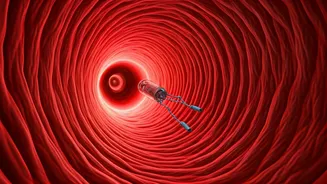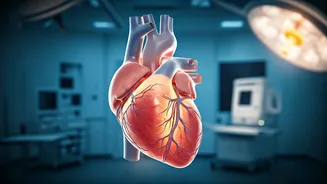Microscopic Marvels
Scientists have developed incredibly small robots, ushering in a new era of medical treatments. These robots, due to their size, are capable of navigating
the complex terrain of the human body to deliver targeted therapies. Researchers are developing these microscopic machines, intending to use them for precise intervention within the body. These robots are crafted to treat diseases at a cellular level. Their minute scale allows for access to areas previously unreachable with conventional methods, offering new possibilities for the diagnosis and treatment of conditions.
Strokes and Tumors
One of the most promising applications of these tiny robots is in treating strokes and tumors. For stroke patients, these robots could travel through blood vessels to remove clots, minimizing damage and improving recovery. Concerning tumors, the robots can be programmed to deliver chemotherapy drugs directly to cancerous cells. This approach lessens the side effects associated with traditional chemotherapy because it confines the treatment to the affected area. The targeted approach increases the effectiveness of the treatment while minimizing harm to healthy tissues, resulting in an improved patient outcome.
The Science Behind
The creation of these microscopic robots involves advanced engineering and materials science. Scientists are experimenting with different materials and designs to create robots that can be controlled and guided within the body. Some robots use magnetic fields for navigation, while others are propelled by tiny motors or chemical reactions. The challenge lies in creating devices small enough to navigate the body while being durable, efficient, and capable of performing complex tasks. Scientists must also ensure these robots are biocompatible, meaning they don't cause adverse reactions when introduced to the body.
Future of Medicine
The development of microscopic robots has the potential to reshape healthcare significantly. These devices are poised to offer more precise and personalized treatments, leading to improved patient outcomes. The technology is also expected to advance diagnostics, allowing for earlier and more accurate detection of diseases. Moreover, the field of nanotechnology continues to evolve, promising new developments in robotics that could broaden the scope of their application. Microscopic robots might one day be used for various tasks, including drug delivery, surgical procedures, and even tissue repair, transforming healthcare in unprecedented ways.













